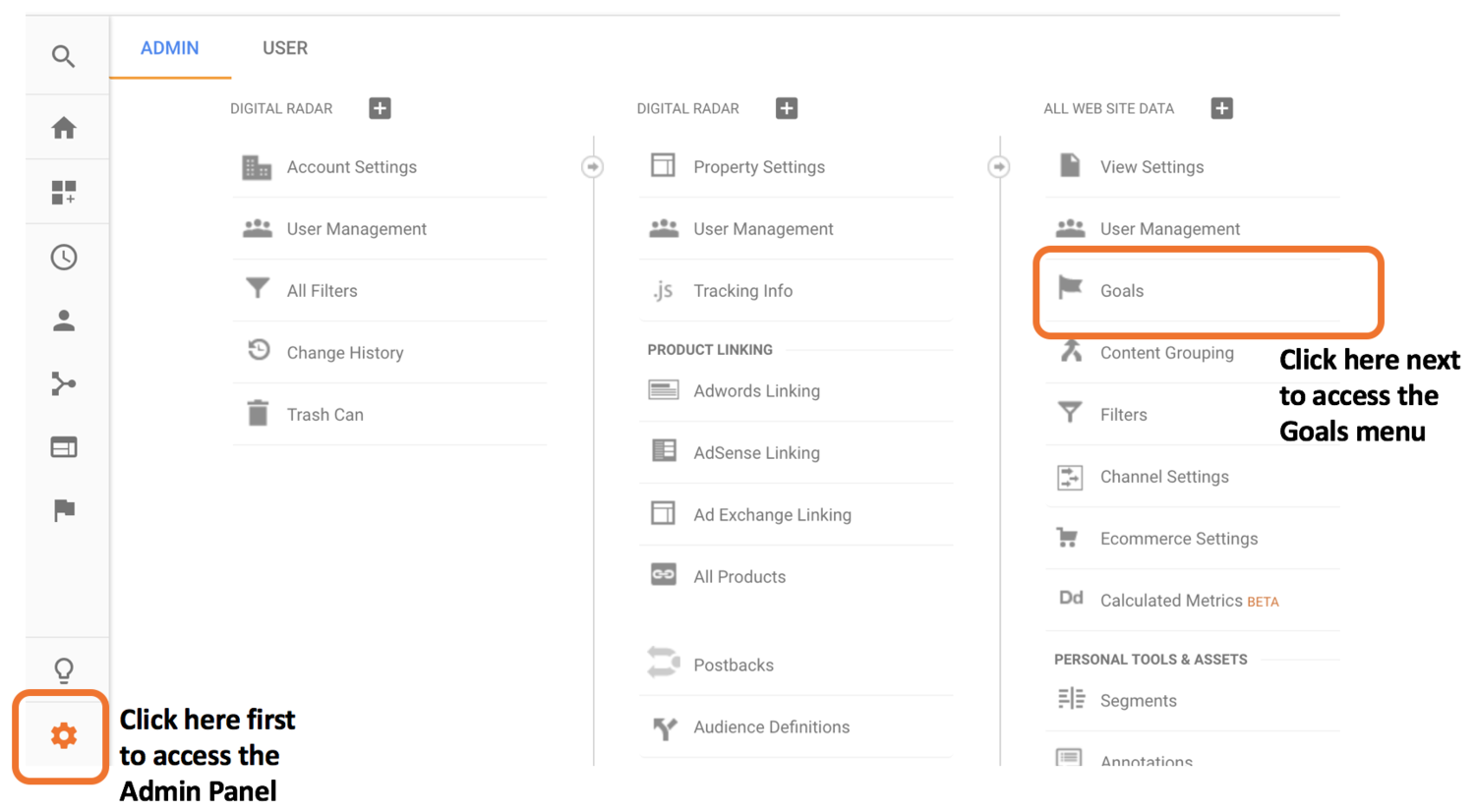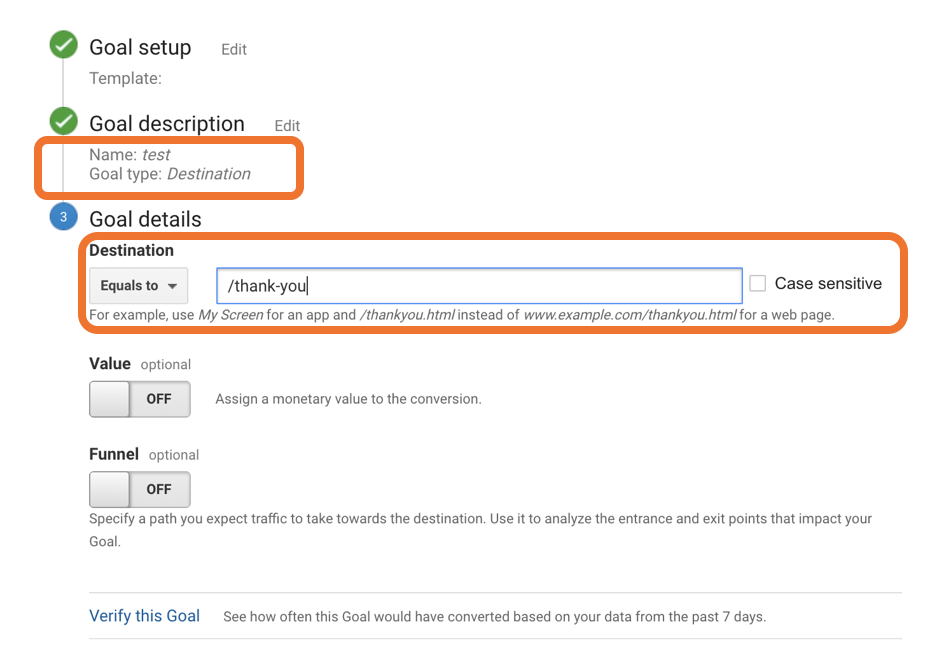Online Lead Generation: How to Use Google Analytics to Measure Website Goals
Google Analytics 101: Setting Up Website Goals

Google Analytics 101: Setting Up Website Goals
Analytics is like the cool guy that everyone knows about, but no one has had the guts to approach, extend their hand, and actually meet and hang out with. In fact, in my experience working with traditional marketers, many run for the hills when it comes time to talk about anything that has to do with quantifiable measurement of marketing results.
There are several tools out there marketers and business owners are using to collect analytics on their website. Lucky for you, the most popular tool also has an incredibly robust and widely utilized FREE version. Drum roll please... Introducing Google Analytics. Fun fact: there are more than 30 million websites currently using the tool.
If you don’t have Google Analytics already installed on your website, the process is fairly straightforward. But if you still have questions, feel free to reach out to us – we’d be glad to help!
We’re going to focus on the creation of GOALS in Google Analytics, because Goal Completions are the metrics used to calculate your website’s Conversion Rate . Your conversion rate is a simple calculation--it measures how many people came to your website, divided by how many people completed those Goals while on your site.
There are certain key behaviors that are more important to your business than others. For instance, the completion of a “Request a Quote” form is more valuable than a PDF download, since that's how you gain strong leads. You should be tracking both, but for those activities deemed “conversions”, you’ll want to use Goals. For everything else, you’ll want to utilize Google Analytics Event Tracking.
You need to know how many people are completing GOALS on your site. Here is how to do it:
Step 1: Decide What website behavior you want to track
Let’s start with something simple: Contact Us form submissions. Since we’re keeping this post at a “beginner” level, we aren’t going to mention how to track these behaviors with events. We’ll save that for another post down the line.
Step 2: Create a Goal in Google Analytics
Within the Google Analytics tool, navigate to Admin> Goals. See screenshot below:

You’ll want to determine what type of goal you’re wanting to create. You can select to either create a custom goal or a template goal . In previous iterations of the interface, the “Template” option provided you with a laundry list of goal templates to choose from, but as of the date this article was written (12/3/2017), you’ll be given the same four choices for Goal Type regardless if you select custom or template (let’s use template so we’re all on the same page):
1. Destination
o This goal’s behavior requirements are fulfilled when someone visits a particular page. For instance, if you have a form that takes people to a “Thank You Page” after it’s submitted, the URL of that Thank You Page would be the destination.
2. Duration
o This engagement goal is most often utilized on sites that rely on ad revenue for support. Duration measures how long someone was on your site. If you need to show advertisers that your site keeps users engaged for an average minimum of five minutes, you can set this goal to five minutes, and each time someone stays on your site for five minutes or longer in a single session, a goal will be recorded.
DON'T KNOW WHERE TO START WITH DIGITAL MARKETING? WE DO, AND THIS AIN'T OUR FIRST RODEO. CLAIM YOUR FREE $1500 MARKETING ANALYSIS TODAY!
3. Pages/Screens per session
o Once again, a goal that is typically used by sites that rely on ad revenue, the Pages/Screens per session give website managers the ability to measure very specific levels of engagement on a website. If you need to show advertisers that on average, people that come to your site visit 10 pages, you would use this goal to set that up.
4. Event
o And here we are at goals that are configurable by events. It is possible to record every single interaction with your site in Google Analytics using events (ideally through Tag Manager). However, not all of those events are worth of being called a “Goal” and therefore used to determine your site’s conversion rate. But for those that are – for instance, if you’re using events to measure Contact Us form submissions – you’ll want to use this type of goal to capture that behavior.
We’re going to select “Destination” as our goal, and we are going to input our destination URL:

Unless you know how much money each form submission is worth in terms of dollars, leave “Value” set to “Off” (and call us to help you figure it out!). If there are no other steps required for someone to complete that form, also leave “Funnel” set to “Off” as well.
Click the “Verify this Goal” link at the bottom of the page, and Google Analytics will tell you whether or not, based on historical activity, your new goal was completed within the past seven days. If it was, congratulations, you’ve just set up your first Google Analytics goal! If your goal didn’t verify, it could be an issue with people actually not completing the goal, low traffic volume, and a goal that was configured incorrectly.
If you need help setting up analytics goals, need help with analytics strategy, or help with your general digital marketing strategy, give us a call! In the meantime, be sure to claim your free $1500 marketing consultation below!



